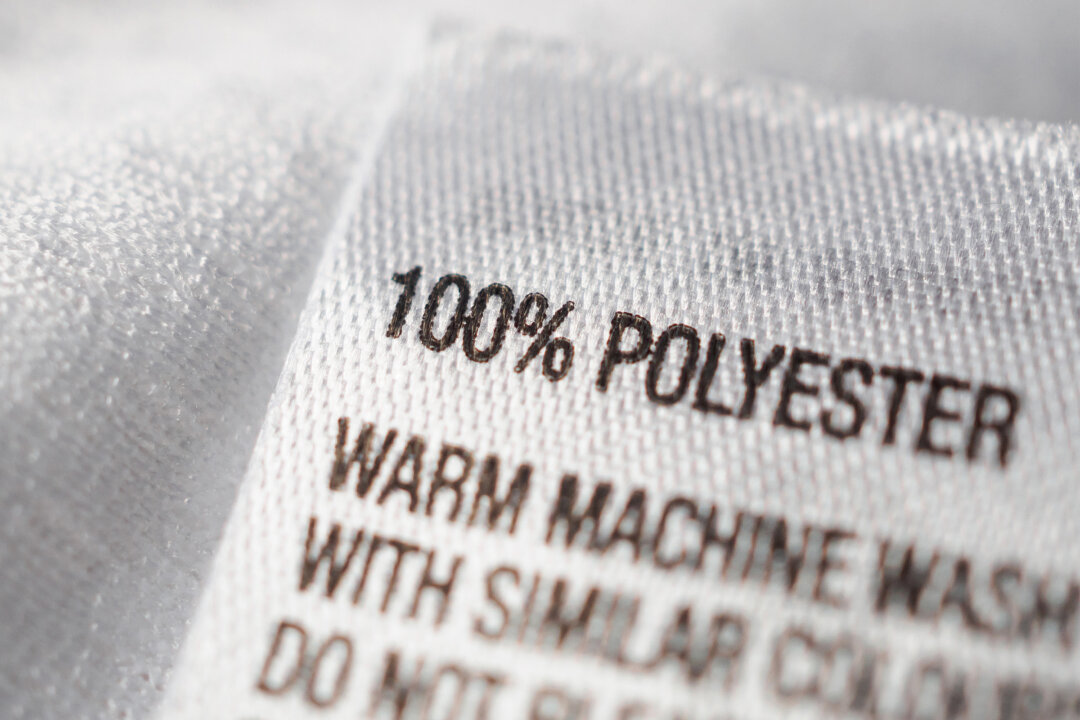
The shirt on your back, the carpet beneath your feet, and the takeout container from last night’s dinner share a troubling secret: They’re slowly breaking down into invisible particles that are turning up everywhere from Mount Everest’s peak to your bloodstream. These microscopic plastic fragments, ranging in size from invisible to no larger than the width of a pencil eraser, have silently invaded human bodies in ways scientists are only beginning to understand—and the implications are unsettling, according to a September scientific review. “Microplastics pose a significant health risk, as they can persist in the environment and carry harmful chemicals,” Dr.
Paul Savage, a toxin expert and founder and CEO of MDLifespan, told The Epoch Times. Each year, between 10 and 40 million tonnes of microplastics are released into the environment. If current trends persist, this amount is projected to double by 2040.
Even if all new emissions are stopped today, existing microplastic levels would continue to rise as older plastic debris breaks down into smaller particles. A review published in Science summarizes the current understanding of microplastic pollution two decades after the term “microplastic” was first introduced. Microplastics are solid plastic particles measuring less than 5 millimeters (smaller than a pencil-top eraser).
They permeate ecosystems, seeping into our food and water, and have found their way into our bodies. “Fast fashion is all made with polyester, nylon, spandex, etc.,” Charron said.
“Fast fashion” is the mass production and sale of low-cost clothing. “Another ’secret' product often made of plastic textiles are carpets, curtains, and bedding,” he added, noting that these materials shed microplastics and toxic chemicals into the air we inhale. “They tend to be some of the most harmful because of the shedding of fibers they do into our air and waterways once washed,” he said.
One study found that over 90 percent of microplastics indoors consist of polyester and manmade fiber, both derived from plastic. Inhalation: Microplastics are in the air we breathe. Skin Absorption: We can absorb them through contact.
Oral Ingestion: Consuming food or beverages contaminated with microplastics, such as milk, soft drinks, canned goods, sugar, and salt, or via organisms like shrimp and fish, is another way they enter our bodies. Infants are also exposed through breast and formula milk. Blood Vessels: Microplastics have been detected in carotid artery plaques and leg vein tissue samples .
Brain: Studies show that microplastics may reach the brain through the nasal passage , bypassing the blood-brain barrier. A 2024 study also found that the brain has a higher concentration of microplastics than kidney and liver samples. Blood: One study identified four types of plastics in a plastic-particle concentration of 6 micrograms per milliliter in 22 healthy volunteers, with polyethylene being the most abundant.
Polyethylene is a widely used plastic due to its versatility and is used in apparel, furniture, and consumer goods. There is still no established threshold or reference level for microplastics in human blood. However, for context, lead, commonly from sources like old paint and contaminated water, is considered concerning in children’s blood at levels above 3.
5 micrograms per deciliter (1 deciliter is 100 milliliters). Saliva: One study found 21 types of microplastics in saliva samples from patients with respiratory diseases. Lungs: Microplastics were present in all regions of the lungs in 11 out of 13 study participants, with polypropylene and polyethylene terephthalate fibers being the most abundant.
Higher concentrations of microplastics were found among smokers . Feces: In one study , 10 common types of plastics were found in stool samples. Children appear to be at greater risk, with findings showing that infants have 10 times more plastic in their feces than adults.
This difference may stem from infants’ higher exposure to plastics through activities like crawling, chewing on textiles, and mouthing objects. Studies also found microplastics in meconium—the first stool passed by newborns. Placenta : Microplastics were detected in the part of the placenta, suggesting they can cross the placental barrier and potentially affect fetal development.
Liver: Microplastics were seen in liver tissues of people with cirrhosis, with concentrations notably higher than in samples from those without liver disease. Colon: Microplastics were also detected in colon sections removed during surgeries, indicating they may remain in the digestive tract. While evidence that microplastics accumulate in the body exists, research on their health effects is still limited.
Health Implications of Microplastics Because microplastics are foreign bodies, they trigger an immune system response. However, unlike viruses and bacteria, the body cannot effectively eliminate them. This chronic presence may lead to oxidative stress and inflammation , potentially resulting in a range of health issues, including DNA damage, allergic reactions, cell death , and cancer.
Microplastics also contain chemicals that can disrupt normal hormone functions and metabolic processes. These harmful substances may leach from the microplastics and enter the body through skin absorption or ingestion. “Microplastics act as vectors that also carry viruses and bacteria, which then travel into our bodies if we inhale or ingest the microplastics,” Charron said.
Research has linked microplastic exposure to an increased risk of diseases. For instance, according to the study on saliva samples, exposure may put people at higher risk of pulmonary diseases characterized by coughing, shortness of breath, wheezing, and a more severe inflammatory bowel disease . Additionally, the presence of plastic in arteriosclerotic plaques, fatty deposits that build up in the arteries, increases the likelihood of heart attack, stroke, or death.
“One major barrier is the lack of standardized testing for microplastic release in drinking water and other consumables,” Savage said. Creating such testing requires more comprehensive studies and standardized protocols to evaluate exposure levels and health impacts, he added. The challenge of measuring these particles in biological samples is due to their wide variation in size and composition.
While eliminating plastic from our lives is unrealistic, there are actionable steps to reduce our exposure. “Run a plastic audit of your house, and take a log of what plastic you are using every day,” Charran said. “It is impossible to make adjustments without knowing where you are using the most amount of plastic.
” After this audit, he suggests determining the most common source of plastic used in your house and finding a more sustainable alternative. Aside from avoiding single-use plastics, he also recommends: Avoiding polyester fabrics and opting for cotton, wool, linen, and natural fibers Avoiding recycled plastics, like swimwear, which shed more than plastics produced from raw materials Not giving children or pets plastic toys Opting for more green vegetables over root crops that may be more contaminated Most importantly, he advised advocating legislation aimed at reducing plastic usage. “Cigarette and plastic bag bans in certain areas are extremely effective in cutting down environmental waste.
” Global efforts to combat microplastic pollution are gaining traction. In March 2022, the United Nations Environment Assembly (UNEA) resolved to create a legally binding treaty on plastic pollution, including marine plastics, with plans to finalize it by 2024. Such a treaty would require countries to take specific actions under international law, with penalties for noncompliance—a key step toward global cooperation on plastic waste.
.














